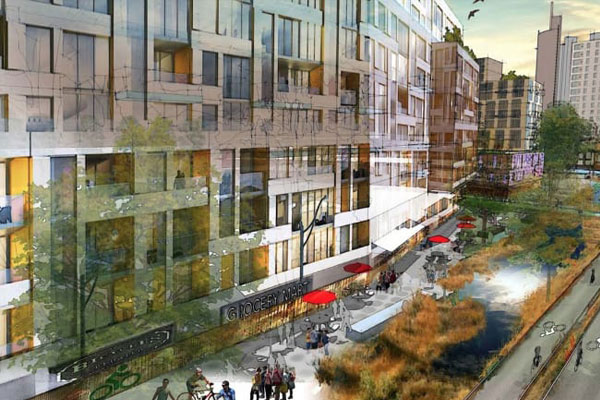Liverpool Hospital is on the verge of becoming a world-class facility thanks to the $740m Liverpool Health and Academic Precinct allocation in the newly announced budget.
“This is going to be the Mayo Clinic of Australasia,” said Professor Les Bokey, a key member of the alliance, known as the Liverpool Innovation Precinct Committee or LIP. It will be “A place of clinical and research excellence.”

This week the community had its first glimpse at how the transformation will look .
The health hub had the potential to pioneer breakthroughs in robotics and automation, cardiovascular research, brain injury, neuroscience and stroke, wound care, the microbiome, inflammatory bowel disease, hepatitis, liver and colorectal cancer, Professor Bokey said.
Three major universities have now embedded campuses in the precinct zone — UNSW, the University of Wollongong and the Western Sydney University, which opened its new campus last week. All three are represented on the LIP committee.
The group is also pushing for a private hospital within the precinct.
“There’s an opportunity for a big private hospital to be placed in Liverpool right alongside the public hospital,” said committee member David Borger, western Sydney director of the Sydney Business Chamber.

The hub – expected to be completed in 2026 – was a surprise addition after two weeks of funding announcements for extra frontline health workers, mental health services and the parents of newborns.
Forty hospitals will be built, upgraded or refurbished with $8 billion over the next four years to ease the pressure on the state’s overstretched hospitals – some at crisis point – under pressure from a growing and aging population with increasingly complex medical needs, as well as a poorly distributed health workforce.
Professor Bokey said his phone had not stopped ringing since Treasurer Dominic Perrottet announced the project at Tuesday’s budget unveiling, with “outstanding young doctors” wanting to know how to be involved.
“It’s already attracting the best and brightest clinicians to the south west of Sydney. They want to work here and this is where they need to be,” he said.
According to the committee, the precinct had the potential to double the number of local jobs in health and education to 30,000 by 2026.
The population in the area is predicted to grow to more than one million and the number of people over 65 years of age will rise by 48 per cent, by 2021.
It’s a population with significantly higher proportions of patients from lower socioeconomic backgrounds and more complex medical needs than their counterparts in Sydney’s eastern suburbs.
The $740 million will pay for a new comprehensive integrated cancer centre, a one-stop-hub for inpatient and outpatients services, diagnostics, treatment and follow up.
A major expansion would help Liverpool’s overcrowded emergency department — which is the busiest in Australia — as well as its outdated maternity and neonatal intensive care units.

